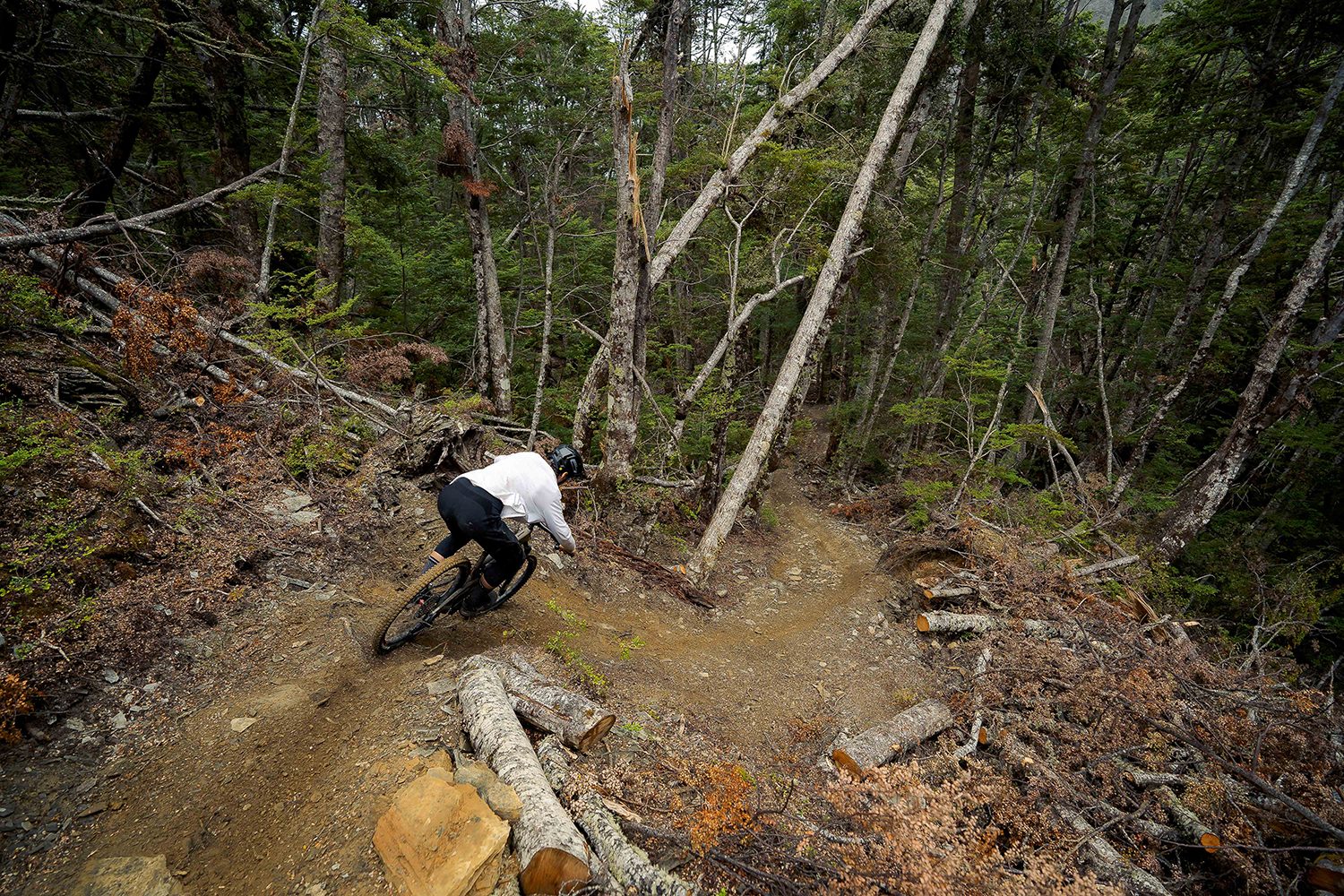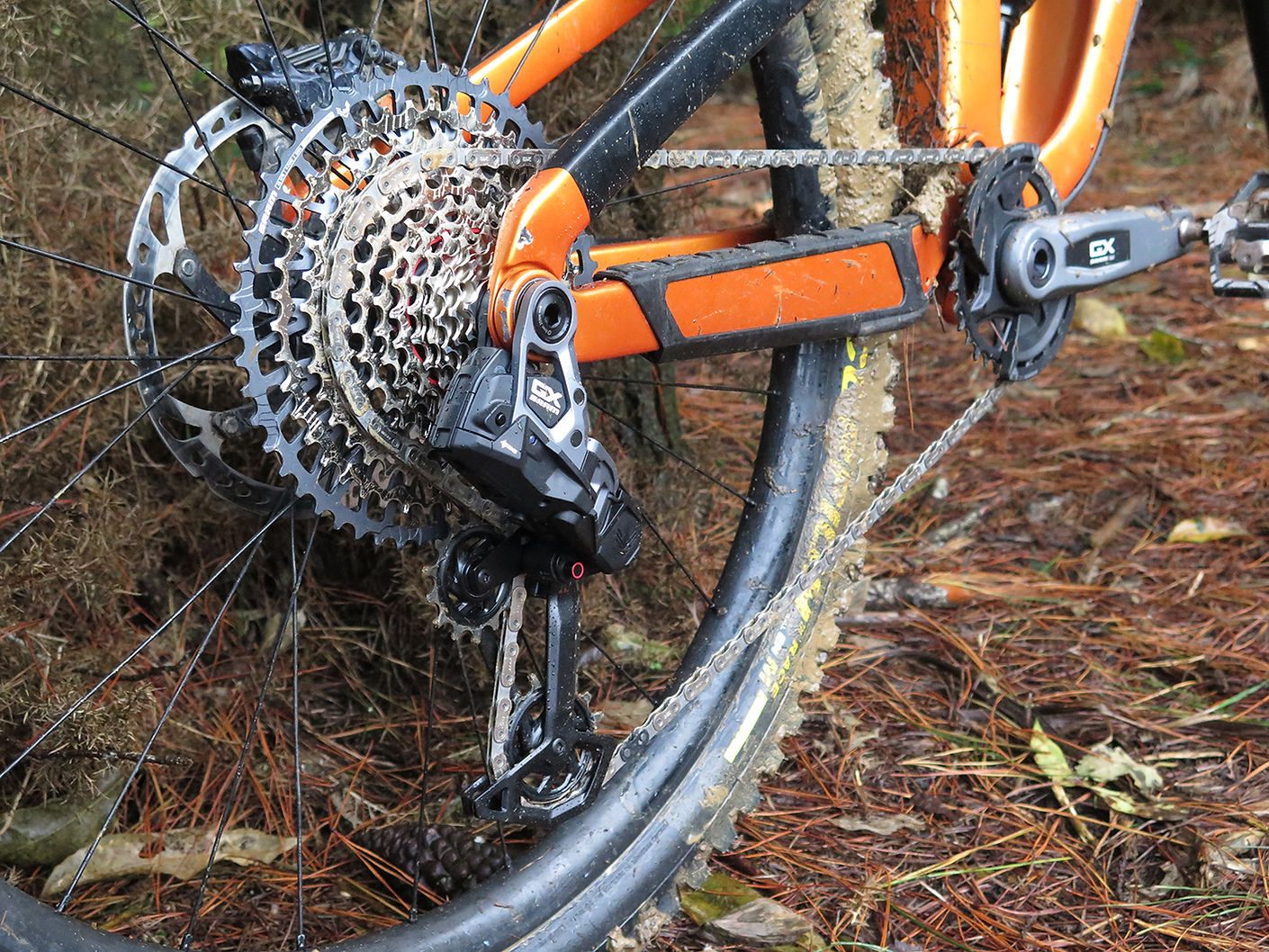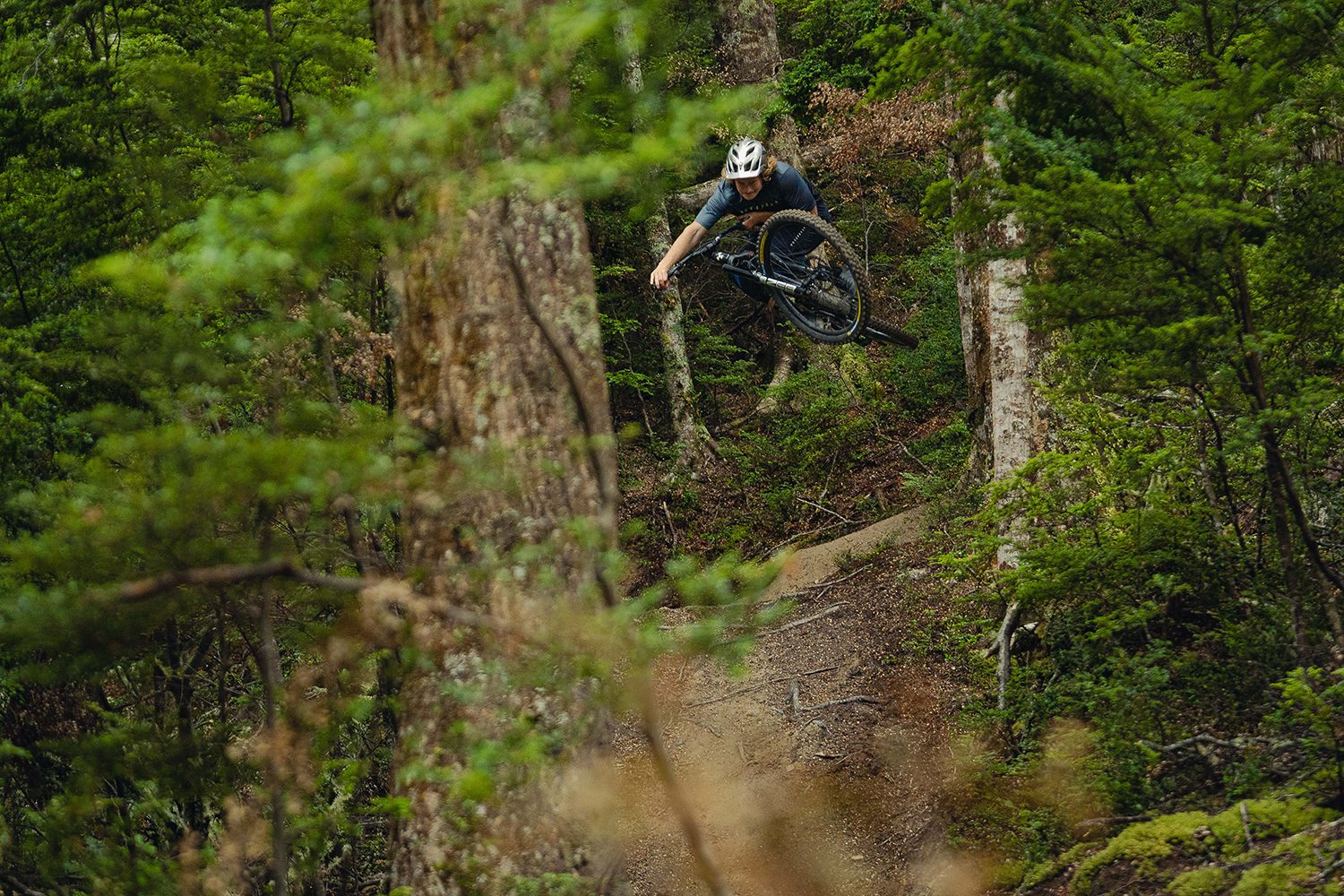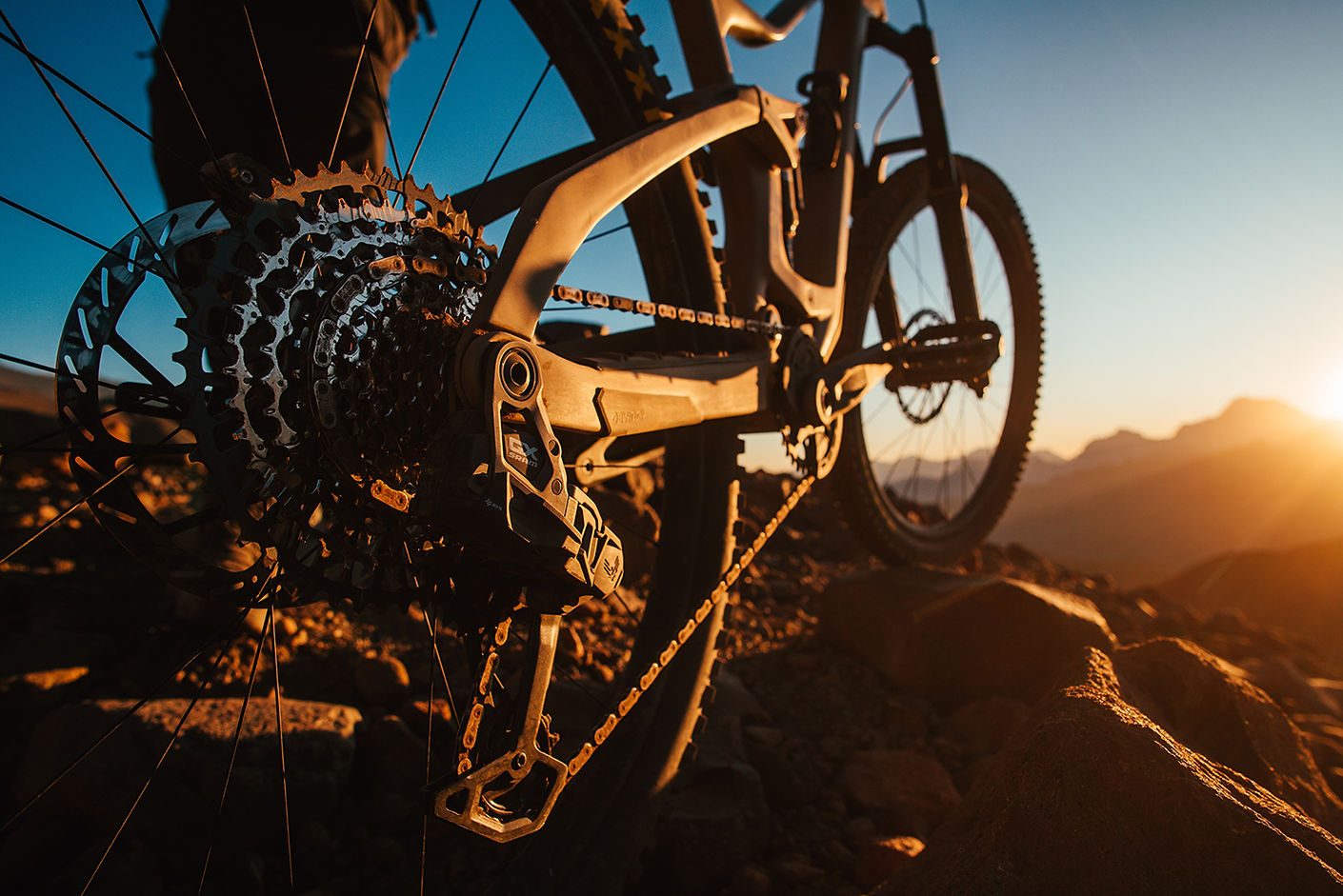SRAM GX Transmission: First Taste
Throwback to 2018: ‘Old Orange’ was the name of my bike, complete with the original SRAM GX Eagle 12 speed. I won’t fudge it – after having races wasted due to chains breaking and multiple derailleurs self-destructing, I jumped ship and went back to an 11-speed set-up. Thankfully, SRAM did what they do; reworked, refined and, not long after, launched the GX Lunar series with an updated and much more reliable derailleur and new cassette. This new series addressed the issues I had encountered but didn’t sway me back to that groupset on my Enduro bike. My cross-country rig does have a full X01 mechanical setup fitted; I really like its lightweight shift feel – the chains last much longer than other brands, and the overall performance is spot-on.
I’ve never spent any length of time on SRAM’s electronic shifting, outside of a three-day stint aboard their gravel-focussed Rival XPLR groupo (I rated it) for NZ Cycling Journal. My SRAM experience has been purely mechanical on the MTB side of things.
GX AXS launched in late March 2021 and was heralded as electronic shifting for the people. To this day, it remains attainable, reliable and precise, but not necessarily an uber-lightweight option (for the price) for those chasing the electronic dream on a budget. The GX Transmission picks up where the standard GX AXS leave off, and incorporates all the features of the higher-end transmission groupsets, but at a more attainable price point.
Looking to break new ground, SRAM tore up the blueprints for anything we know about the rear derailleur and not only reworked them, but created an entirely new ecosystem by removing the derailleur hangar and creating a place to stand while your bike is lying on the ground. All jokes aside, the new groupset looked to be a pretty game changing piece of kit – even the price was game changing!

In March this year, SRAM launched the Transmission ecosystem, with their XX SL, XX, and XO levels. Unless you were on an internet-free trip to Mars, in a submarine looking for the Titanic (too soon?) or hidden under a very large rock which had squashed your phone and computer, you’ll have seen its huge launch. For days you couldn’t go anywhere online without seeing pictures of people standing on derailleurs. We won’t delve into the nitty-gritty of the Transmission development or tech in this piece, as that story has largely been told, but we will give some first impressions and point out some differences from what’s already in the market.
Today marks the launch of part deux of the Transmission story, as SRAM launch the GX series – continuing their ‘All Day’ theme with a groupset designed for all-mountain, all-day missions, at a far more affordable price. What you find on the GX system is largely the same as the higher-end Transmissions released earlier. There are some subtle differences which are visually noticeable from those higher-end units. In particular, the battery is hidden away in what I’ll refer to as the “Derailleur Garage” – keeping it out of harms way – essentially inside the derailleur. Replaceable, protective skid plates have been added, and a two-piece outer link. It also features a tool-free cage assembly – so it’s both removable and upgradeable, should you want to do so. A steel inner cage replaces the carbon of its higher-end brethren. Like the GX AXS of old, it’s been built for riders of the real world.
A couple of weeks before the launch date, a nice cardboard cube arrived on the courier. Hastily, I opened the SRAM Eagle logo-adorned box to find a neatly stacked groupset: three tiers, a layer cake of sorts. The piece de resistance – the derailleur – on the top, with the crank set and cassette making up the second and third tier respectively. The packaging is fully recyclable and recycled cardboard, there’s not a piece of plastic packaging in sight – in fact, the only piece of throwaway plastic I could find was a tiny piece of Sellotape and a cap over the end of the crank spindle. A leap forward from SRAM’s old packaging.

A quick watch of the install video and it was game on. It’s been a long time since I’ve installed anything on my bike that required a proper read of the instructions or, in this case, a video. SRAM does a killer job of stepping through the installation process: whoa-to-go in around 30 minutes. I’d imagine after another couple of goes, a whole Transmission could be installed in about 15 – 20 minutes, maybe even quicker. It really is pretty simple provided you’ve watched the video. My only install hiccup was my inability to pair the system to my phone (no doubt user error, but I’ll figure that out soon) as well as the compatibility of the shifter clamp with my brakes, which aren’t SRAM. It took a bit of jimmying, but I managed to get the two to work together – it did mean that I couldn’t take full advantage of the adjustment that should have been available. Fortunately, the one spot I could get the shifter to sit was just right for me. I see in their documentation a different shifter pod mount is available and this would have completely solved my issue.
After realising there wasn’t an AXS charger in the box (I believe it will ship with one) the derailleur light signalled a critically low battery, so I waited out a few very wet and cold days, borrowed a charger from a mate, finally charged a battery, then hit the trails.
Te Miro MTB Park, just out the back of Cambridge, was my first testing ground. For the uninitiated, the trails are reasonably varied but the general theme is clay and native roots, dispersed amongst meandering climbs with the odd pinch or crux move requiring low cadence torque and fast, precise shifting to get the most out of your bike if speed is your aim. Coming off the back of a few days of intermittent rain, I wasn’t expecting much aside from mud and muck – perfect for bedding in a fresh groupset.
Leaving the car park, I snapped through the gears and made sure everything was still as it should be. I shifted through the cassette and took a couple of looks back just to be sure it had shifted, as it was so smooth and quiet, just a small ‘zit’ noise and a rolling increase of resistance at the pedals. I spun my way up the Easy As climb, taking the harder, steeper lines where possible, purposely shifting at the wrong time and under full power. Thoroughly impressed at how positive the shifting feel and accuracy was I pressed on, thinking to myself, ‘sure, it’s good now, but I bet once there’s some mud in the system it will be just like everything else’.

‘Easy As’ caps out and links into the Miro climb; its mellow gradients are broken up with some proper NZ native roots. Regular traffic polishes off the bark and pulls slimy dirt up onto them. You have to have your wits about you to keep the power down and maintain forward momentum, a situation where a mis-shift or slipped gear will likely see you stalled out or on the floor. Again, I was impressed by how accurate the shift was, with no slipping or mis-shifts, regardless of how many shifts under full power, and regardless of cadence.
Words: Lester Perry
Photography: Jake Hood / Lester Perry / Supplied


